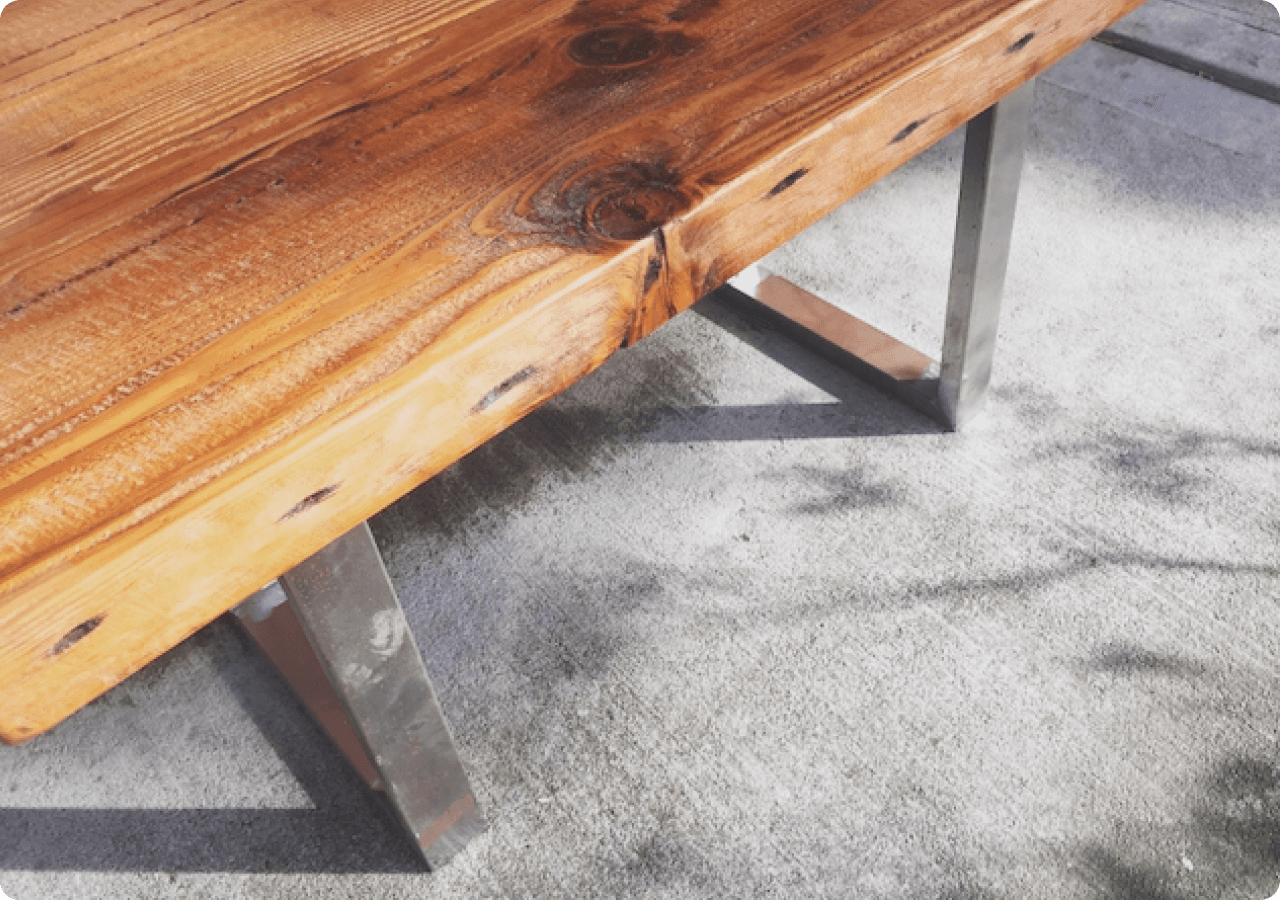Silvia Lee
Updated: Jan 2, 2024
The Layer Guide to Sustainable Interior Design Practices
Explore sustainable interior design practices that reduce environmental impact, enhance aesthetics, and promote eco-friendly, energy-efficient spaces.
Learn more about Sustainable Interior Design Practices
Sustainable interior design practices are not just a trend. They're a responsible and eco-conscious way to create spaces that are visually appealing and environmentally friendly.
As an Interior Designer, you have an oversized impact on carbon footprint. High level statistics show why AEC professionals in general have such large environmental impact. Its estimated that in between the US, Canada, and Europe:
Renovations & greenfield construction combined consume 40% of all raw materials,
construction consists ±40% of all energy usage, &
construction related activities create around ±40% of all waste annually.
The operation of buildings also contributes. It's estimated that our spaces account for ±40% of all GHG emissions & energy usage.
How can you make the biggest negative impact on natural resources as an interior designer?
Here are 7 ways interior designers can make a positive impact on a project.
1. Choose Eco-Friendly Materials Wisely
There are three main facets to choosing sustainable materials.
Are the materials eco-friendly to produce?
How far away are they coming from?
Will installation requirements add additional emissions (for example certain types of finishes if applied on-site)?
Choosing sustainable interior design products starts with understanding if the materials themselves are eco-friendly. When sourcing materials for your design projects, consider the following aspects:
Natural Materials: Where possible, opt for building materials like reclaimed wood, bamboo, cork, or stone. These are both renewable and biodegradable.
Recycled Content: Look for materials with recycled content, such as reclaimed metal, glass, or recycled plastics. Recycled materials divert waste from landfills and reduce the demand for non renewable resources.
Low VOCs: Choose paints, adhesives, and finishes with low volatile organic compounds (VOCs) to improve indoor air quality.
Transportation: Product fit and finish can vary slightly from location to location. Choosing locally sourced materials where possible further reduces the impact your project has on the environment.
Sustainable Fabrics: Use textiles made from organic cotton, hemp, or recycled fibers to reduce the environmental footprint of furnishings and upholstery.
Pro-tip: You can use Layer to store and categorize your library of typical materials. Associate data on origin, content, emissions, and recycled content certifications. This will allow you to easily present sustainable interior design materials to your clients.
2. Illuminate Responsibly with Natural & Energy-Efficient Lighting
Lighting plays a crucial role in interior design, and adopting energy-efficient lighting practices can significantly reduce energy consumption. Consider the following strategies:
LED Lighting: New buildings often need lots of light bulbs. LEDs are often the most energy-efficient choice. They tend to last longer and emit less heat than traditional bulbs.
Use windows, skylights, and reflective surfaces to augment natural light and reduce the need for artificial lighting.
Dimmers and Sensors: Specify and install dimmer switches and motion sensors to optimize lighting levels and minimize energy waste.
3. Choose Sustainable Furniture
Sustainable material for interior design goes beyond construction materials. Selecting sustainable furniture is a cornerstone of eco-conscious interior design. Here are some tips for furnishing your space responsibly:
Circular Economy: The best way to minimize impact to the environment is to minimize what is thrown away. If you are working on an existing space, reupholstering or refinishing furniture is an easy way to eliminate waste. For new spaces or when old items cannot be repaired, consider upcycled or vintage furniture over new.
FSC-Certified Wood: Look for furniture made from wood certified by the Forest Stewardship Council (FSC), indicating responsible and sustainable forestry practices.
Modular and Versatile: Opt for modular and multifunctional furniture that can adapt to changing needs, reducing the need for additional pieces.
Local Artisans: Support local artisans who create handmade, sustainable furniture pieces with unique character.
4. Efficient Space Planning: Maximizing Utility

Efficient space planning is integral to sustainable interior design. It involves optimizing the use of available space, reducing waste, and creating functional layouts. Consider these space planning strategies:
Open Floor Plans: Embrace open floor plans that encourage natural airflow and reduce the need for additional heating or cooling.
Multi-Purpose Areas: Design multi-purpose rooms to maximize functionality and reduce the need for excess space.
Modular Furniture: Use modular furniture and built-in storage solutions to make the most of available space.
Natural Ventilation: Design spaces to harness natural ventilation and reduce reliance on mechanical systems.
5. Sustainable Building Practices: From Foundation to Finish

When embarking on new construction or renovations, sustainable building practices can have a significant impact on the overall sustainability of your interior design projects:
Energy-Efficient Insulation: Use energy-efficient insulation materials to reduce heating and cooling needs.
Solar Panels: Consider incorporating solar panels or renewable energy sources to power your space sustainably.
Green Building Certifications: Aim for green building certifications such as LEED (Leadership in Energy and Environmental Design). This will ensure your project adheres to rigorous sustainability standards.
Recycling and Waste Management: Implement comprehensive recycling and waste management systems to minimize construction waste.
6. Lifespan and Durability: Long-Lasting Design

Sustainable interior design prioritizes durability and longevity to reduce the frequency of replacements and renovations:
Quality Over Quantity: Invest in high-quality, long-lasting materials and furnishings rather than disposable or trendy items.
Maintenance Planning: Develop maintenance plans to ensure that your interior spaces remain in excellent condition over time.
Adaptability: Design spaces that can adapt to evolving needs and design preferences, reducing the need for major overhauls.
Pulling it all together
Need a couple sustainable interior design examples to show a client? Here are 3 examples that show you can still build a stunning space while adhering to sustainable building practices.
Early BKK by Spacecraft
Early BKK by Spacecraft is one of my favorite examples of sustainable design in interior design. This building is a sustainable community café in Bangkok, designed with a strong focus on recycling and upcycling. The café uses recycled materials like milk cartons and beer bottles for its architecture and interior, incorporating a "re-board" made from cut-up milk cartons for various elements, and using beer bottles for both aesthetic effects and functional components, such as terrazzo counters and wall patterns.
Paseo Mallorca 15
Architects Paloma Hernaiz and Jaime Oliver of OHLab designed the Paseo Mallorca 15 apartment building in Palma, Spain, with a focus on sustainability and passive-house design principles.
The building features moveable thermo-treated pine slats as a solar filter on the southern side, allowing residents to manually adjust them for cooling in summer and warming in winter. The design incorporates traditional Mallorcan architectural elements, such as cross-ventilation, to maintain comfortable temperatures, resulting in an energy-efficient building with a 90% lower energy demand compared to conventional structures.
LaGuardia Airport
LaGuardia Airport's Delta Air Lines Terminal C underwent a significant transformation, featuring soaring interior spaces with abundant natural light. Sustainability played a key role in the design, including elements such as a thermal storage system, reduced artificial lighting through harvesting, and the use of electrochromic smart glass to control glare and heat gain. The terminal also incorporates site-specific art installations, such as "Skylight Gems" by sculptor Virginia Overton, adding to the overall passenger experience.
Conclusion
By integrating these sustainable interior design practices into your projects, you can create spaces that not only reflect your unique style but also contribute to a more sustainable and environmentally responsible future.
Sustainable interior design is more than a trend; it's a conscious choice to make the world a better place, one beautifully designed space at a time.
Want to learn how you can manage materials or sustainability tracking in Layer?
{% module_block module "widget_d8fa7af1-35f8-4689-8c07-ef1db481b112" %}{% module_attribute "child_css" is_json="true" %}{% raw %}null{% endraw %}{% end_module_attribute %}{% module_attribute "css" is_json="true" %}{% raw %}null{% endraw %}{% end_module_attribute %}{% module_attribute "label" is_json="true" %}{% raw %}null{% endraw %}{% end_module_attribute %}{% module_attribute "meeting" is_json="true" %}{% raw %}"https://hello.layer.team/meetings/layerapp/demo"{% endraw %}{% end_module_attribute %}{% module_attribute "module_id" is_json="true" %}{% raw %}33947244299{% endraw %}{% end_module_attribute %}{% module_attribute "schema_version" is_json="true" %}{% raw %}2{% endraw %}{% end_module_attribute %}{% module_attribute "tag" is_json="true" %}{% raw %}"module"{% endraw %}{% end_module_attribute %}{% end_module_block %}




